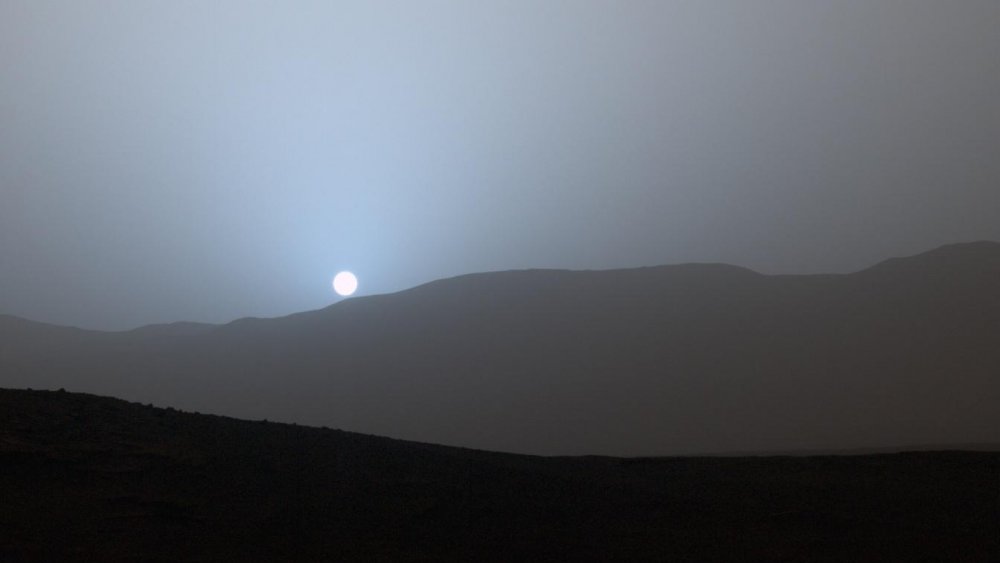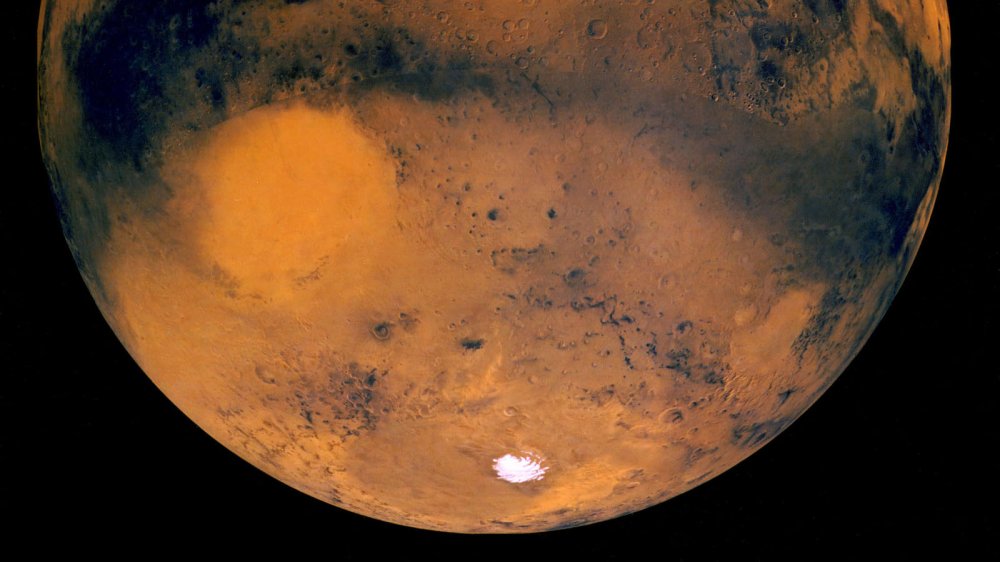The Untold Truth Of Mars' Strange Blueberries
Due to the specific fineness of its dust, which allows blue light to pass through it with relative ease, NASA explains, the sunsets on Mars are blue. It's a fun fact, but also reinforces the point that Mars is an alien planet teeming with oddities and unexplained scientific mysteries.
Another such mystery arose in February 2004, according to Astrobiology, when Steve Squyres — the principal investigator on the Mars Exploration Rovers project — revealed that small, round "sphereules" had been found embedded in the outcrop, which he described a resembling "blueberries in a muffin." In a press release, NASA announced they had found these objects scattered around a small crater where Opportunity had been scanning, and that its "Mössbauer spectrometer, which identifies iron-bearing minerals, found a big difference between the batch of spherules and a 'berry-free' area of the underlying rock." Now, something in particular must encouraged the growth of these iron, specifically hematite, spherical shapes. Between the apparent randomness of the blueberries distribution and the occasional interlocking spherule (which is the fancy, scientific name for a small spherical object), the team deduced that the most probable cause for this was a wet environment.
In other words, they were formed by water.
But what does it mean?
Considering that Opportunity had only been on Mars's surface for a couple of months by this point, possible evidence that Mars once had water was a huge coup. However, other scientists disagreed. In a smackdown piece published in Lunar and Planetary Science, researchers decided that initial interpretation "contains so many contradictions and problems that an alternative explanation seems necessary." Ouch! Between the uniform size of blueberries, their perfect shapes, and unusual color, there had to be a better explanation. Meteor impacts, which was the one offered by the paper's authors, Donald Burt, Paul Knauth, and Ken Wohletz, answers these loose ends better.
Since then, however, the pro-water camp have returned back to Earth to understand the blueberries. The reasoning is that, on Earth, humans have analogous objects made in a similar way, so if you compare the two, it may lead to a better understanding of what Mars was like at the time of the Martian blueberries's creation. The results, published in December 2018's Science Advances, commented that the rocks between the two planets had many differences that can be attributed to different conditions. From this, though, the team believes that a similar process could have created the spherules under higher CO2 conditions.
However, without an actual Martian blueberry to examine and compare, these speculations remain largely idle. That said, you should expect more papers to appear, all arguing with each other over what they believe these minuscule spherules mean.

